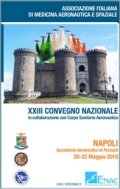




|
|
|
|

Abstract
CIRCADIAN RHYTHMS IN SPACE FLIGHT
Charles A. Fuller
University of California, Davis (USA)
The circadian timing system (CTS) generates and coordinates biological rhythms within an individual, and synchronizes these physiological and behavioral oscillations with the external 24-hour environment. Studies in humans, as well as other species, have also demonstrated that the CTS is affected by changes in gravity. Therefore, to ensure crew health and performance in long-term spaceflight, alterations in CTS regulation must be understood. The NASA STS-90 Neurolab Spaceflight provided a unique opportunity to evaluate the direct impact of microgravity on the circadian timing system and the circadian pacemaker in both astronauts and animal experiments. For example, during this flight, 24 Fischer 344 rats were exposed to 16 days of microgravity. They were chronically implanted with biotelemetry transmitters to record body temperature (Tb) and heart rate (HR). Six of the rats were exposed to constant light (LL) and 18 of the rats were exposed to a 24-hr light-dark cycle (LD 12:12). The ability of light to induce c-Fos (an immediate early gene marker for neuronal activity) in the suprachiasmatic nucleus (SCN), the mammalian circadian pacemaker, was examined in animals sacrificed on flight day 2 (FD2), FD 14, recovery day 2 (R1) and R13. The flight rats in LL exhibited persisting free-running rhythms, with a change in circadian period () relative to ground controls. The period changes returned to control values one week after landing. The flight animals in LL demonstrated altered internal phase angle relationships between rhythms compared with ground controls. The flight rats in LD remained entrained to the LD cycle; however, they evidenced a pronounced phase delay in Tb, but not HR compared to controls. The flight rats also demonstrated a decrease in Tb and a change in the daily waveform compared to controls. Both the LD and LL flight rats exhibited an increase in HR relative to ground controls. Finally, early in-flight, the flight animals demonstrated a reduced sensitivity to light as evidenced by a highly attenuated c-Fos immunoreactivity compared to controls. These findings suggest and further, corroborate with previous space-flight data, that microgravity affects the circadian clock, including the clock’s ability to maintain temporal organization and to properly entrain to an external LD cycle.